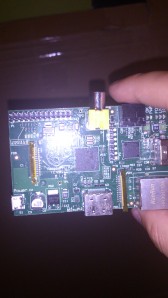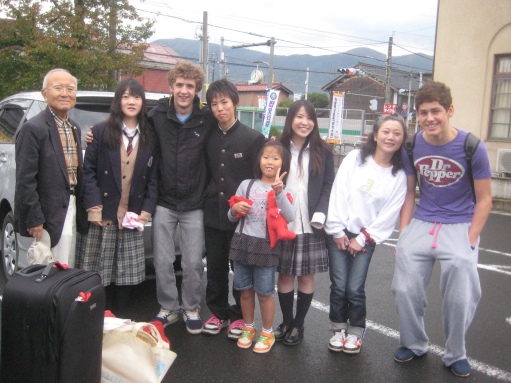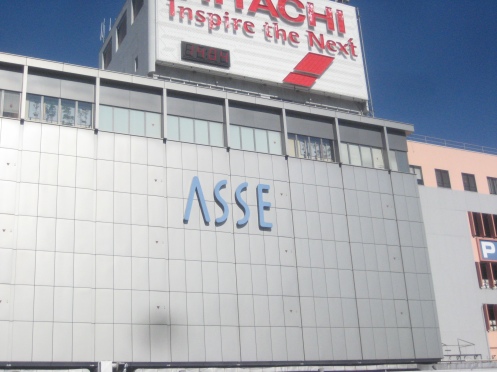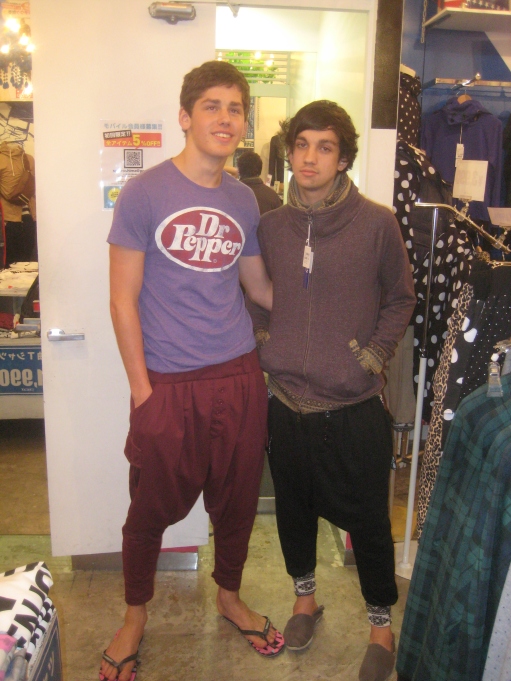Before I begin I should probably point out that this post describes the plot of the second Black Mirror short film, although I’ve tried to miss out anything which is a major spoiler. However if you’re sensitive to spoilers it would probably be best to watch it first on 4oD. Please note that these are my own views and aren’t necessarily definitely what Charlie Brooker was trying to get across, so if you got anything else out of it feel free to leave a comment. People who’ve already watched it might as well skip the next three paragraphs.
So I watched Black Mirror again last night, a trilogy of short films by Charlie Brooker which, in the words of 4oD, “tap into the collective unease about our modern world.” And I can see exactly where they’re coming from. Last week’s episode saw the prime minister (not Cameron, unfortunately) committing embarrassing and horrific sexual acts on a pig after receiving a threat from a terrorist that he would kill a kidnapped member of royalty if he did not comply. Part of the demand was that it would have to be aired on national live TV, while millions of people watched on regardless of how disgusting it was. Although it made a few good points, such as how things like YouTube (where the video of the hostage was uploaded) and Twitter can cause widespread publicity about anything, and that people feel no shame for pressurising someone in the public eye to do something as degrading as that, I found it almost too ridiculous and couldn’t really take it seriously. However, I felt that the second film made many excellent points about our world.

The first episode showed what a blood-thirsty and dangerous weapon this little bird can be
The film was set in an exaggerated future where humans, once they had reached twenty-one began their working life peddling on a bike every day which earned them ‘merits’, the currency of their new existence. Wherever they went, adverts followed them on the screens that made up the virtual life they seemed to be living. If they closed their eyes, the screens would flash red and order them to open their eyes again and money would be taken from them if they decided to skip the adverts. In front of the bikes were screens which displayed an avatar of the person riding it, and a choice of different TV shows and games that were accessed by hand gestures. One of the shows was basically fat people getting food shoved in their faces and being laughed at. Although there was no explicit explanation to this, I think it hinted at the discrimination of fat people, but I’ll get onto that later.
The story of the short film saw the main protagonist (Bing) falling in love with a girl he spots one day (Abi), and after hearing her singing in the toilets offers to pay the 12 million merits out of his 15 million he has saved up to pay for an entrance ticket onto ‘Hotshots’, a futuristic parody of X-Factor which included the cliché two-guys-and-a-girl judge panel, one of which was your typical horrible judge who always puts it blunt. After finding out that the price has gone up to 15 million but going ahead with it anyway, the two head down to the studio and instantly get picked from the incredibly packed room to go onto to the stage immediately. You’ll have to watch the rest of the episode yourself to find out what happens, because I’m droning on and don’t want to spoil too much. Suffice to say that in the end he saves up another 15 million merits and returns to the show to get his revenge on something bad that happens the first time around and ends up giving a speech about the world they live in only to be manipulated instantly by the judges.
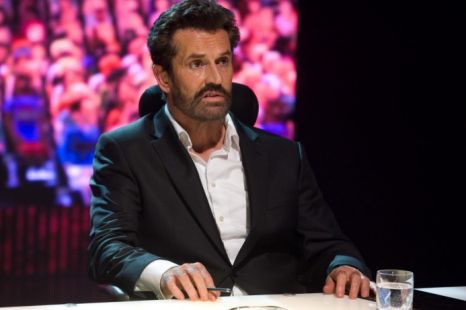
The Simon Cowell of Black Mirror
I think that the film made several excellent points about society, one of the main ones being about advertisement. We live in an age where advertisement is everywhere, it’s almost impossible to escape. I’ve never lived in a city, so I haven’t experienced the full force of advertisement but even in a small town like Aberystwyth you see it on the sides of buses, constantly on TV and on signs scattered about the town itself. We’re constantly told to buy, buy, buy, and a massive point made in the film was that we’re not buying anything of any worth – we just buy things. The example in the film was that people could spend their merits on getting new clothes for their virtual selves. It sounds ridiculous and pointless if you think about it, because what difference does it make if a picture on a screen which merely represents you is wearing a hat? A had made of pixels, a hat which isn’t going to keep you warm or have any practical use at all. Like I said, it sounds ridiculous but it’s happening in this very day and age. The main thing that springs to mind is Xbox Live, where people have their own avatar for which there are thousands and thousands of pieces of clothing and accessories you can buy. Another example is a recent Steam sale I was inevitably drawn into, where a game was being sold for an incredibly low price, although I could pay a few pounds extra so that I had more character models to pick from. I eventually came to the conclusion that it wouldn’t change how much I enjoyed the game seeing as it was first-person so I couldn’t see my guy anyway but I never ended up buying the game at all. The point is that people will actually buy those extra characters without thinking about it and realising that it makes no difference whatsoever.

This stuff will seriously change your life.... Really. And it's definitely worth your money
This constant need that we all feel to buy things we want completely dominates our society and completely messes up our priorities. And I can’t say that I don’t include myself in this because I know that I definitely do. Take for instance my passion for videogames. Throughout my lifetime I have probably spent thousands of pounds on them, but what for? I enjoy them while I’m playing them, but they distract me from the things that really matter, which was something I learnt from going to Japan. There’s a whole world out there full of amazing things but we’re all too obsessed with work and materialistic things to notice or care. One thing I’ve noticed since watching it though is that advertisements are starting to use these “things that matter” to sell more products. For instance, the Christmas Nintendo Wii advert sees a father writing to Santa asking for a Wii so that he can have some good bonding time with his son. Am I right in thinking that this isn’t how a father should bond with his son or am I due in for a reality check?? It’s sad in that we’re merging the things that don’t matter with the things that do. Despite saying this, I doubt I’ll instantly change into a better person overnight, if at all.
Work was another thing the film addressed. When people reached the age of twenty-one they started their working life, peddling on the bike to generate more energy for our power-hungry world. One of the biggest and most challenging questions asked in philosophy is ‘what is the meaning of life?’, and it seems almost obvious that it’s all about the preservation of your species. Okay, it’s not an in-depth and philosophical answer, but it’s true. We might try to thinly veil it but everything we do is to keep mankind alive and kicking. We work from a young age until an old age to keep our society going, and then we have the rest of our lives off to do what we want. Think about it: we go through primary school learning the fundamentals of life, then it’s straight on to secondary school to learn how to learn then we’re split into two groups. There are the people who leave school after stage two to go and find work and there are the people who stay on at sixth form to learn to be more independent with their learning. For the people in the first group, that’s where their working life begins. They might jump from job to job but it’s generally work, work, work from there on. The people from the second group still have a good few years of “freedom” left, eventually going to university and becoming individual adults (something group one have probably already achieved) and tailoring themselves to cater for a specific choice of career. Then they leave and eventually find a job and they’re set for life – emphasis on ‘for life.’ We work until we’re old and then we’re rewarded for our work through pensions, or “free” money. But by then we’ve not got a massive amount time left to actually do much, and we’re too old to do a lot of it anyway. It makes you wonder what’s actually wrong with the ‘live fast – die young’ attitudes some people have towards life, because they probably get just as much out of it as anyone else.

I want one of these so I can have a meaningful and bonding experience with my father... No? Oh well, it was worth a shot
However it’s not like that right now, what with the economic crisis and everything. Nobody can find jobs anymore, so we don’t have any money. And even if we could find jobs and did have money we’d be too busy to spend it on things that mattered. And this bring me onto my final point about reality TV (X-Factor specifically) and the points about it that were made in the film. People are turning to desperate solutions with the hope of one day getting famous, and these shows are one of those solutions. Reality TV is incredibly manipulative and abusive. Okay, maybe a bit of a dramatic way of putting it, but look up the contract that contestants sign when they sign up for a reality TV show and you’ll probably be shocked. It’s becoming commonplace to put someone on a stage so that they can be manipulated and embarrassed in front of millions of people watching across whole nations, and we don’t even notice how wrong this is. For instance, on this year’s X-Factor, one contestant (a female) was receiving abusive hate-mail calling her fat among other things. Now she definitely wasn’t fat, but we’re living in a world where if you’re in the public eye and aren’t super-skinny then you’re automatically clinically obese. Another boy on the show got through and was instantly put on a diet to make him lose weight. It’s sad that to be famous you have to fit a mould otherwise you’ll get nowhere. And why do the judges bother to do all this? Is it because they’re really nice people and simply want you to end up a better person, or is it simply because they make wheelbarrows of money from you, both through the show and afterwards?
I know I’m being incredibly cynical about everything but the reason for this is that it was a cynical film; I know there are loads of good things about our world and I’m a happy and positive person really, don’t get me wrong haha! Anyway, well done for making it this far, I only wish I could write this much in a few hours for my multiple courseworks… If you haven’t watched any of the Black Mirror films yet then I implore you to do so, because they’re very thought-provoking as you can probably see!
Thanks for reading, and if you enjoyed this post and any of my others, please click the follow button on the right and the share buttons below and I’ll try my hardest to keep updating the blog just for you 😛


